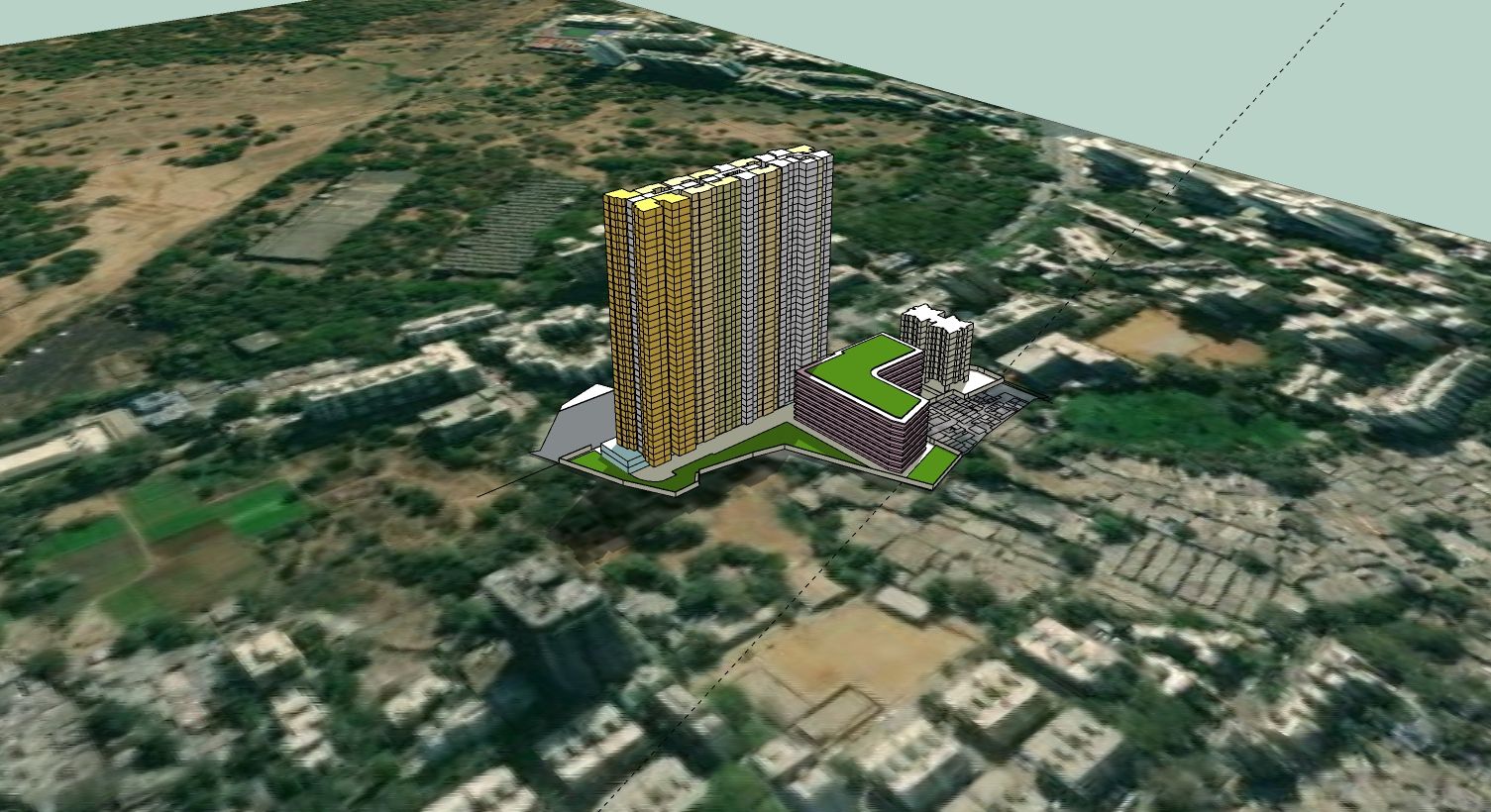This article covers society redevelopment and cluster development, In Mumbai, these are covered under regulations 33(7) & 33(9) of DCPR 2034.
The need for society redevelopment and cluster development arises from the aspirations of the residents and the broader community. Redevelopment provides an opportunity for residents to upgrade their neighborhoods to keep pace with modern advancements in construction technology, amenities, and service-related innovations. Buildings are becoming outdated faster, and there is a growing demand to replace slow-speed lifts, outdated sewage treatment plants (STPs), inadequate space for home offices, and subpar amenities such as kids’ play equipment.
Also explore on Affordable Housing at a Glance: Addressing the Homeless in India
Types of Society Redevelopment
- Self-development
- Joint venture development
Redevelopment can be executed either by the existing society or in partnership with a developer. Each approach has distinct advantages and challenges.
Self-Redevelopment
Advantages:
- Cost Savings:
- Lower Costs: Eliminates the profit margin of the developer, leading to significant savings for society members.
- Direct Control over Budget: Residents manage finances directly, ensuring transparency and potentially reducing overall expenditure.
- Customization and Control:
- Personalized Design: Allows residents to tailor the redevelopment to meet their specific needs and preferences.
- Direct Supervision: Society members can oversee the quality of construction and materials used, ensuring higher standards.
- Profit Sharing:
- Retention of Profits: Any surplus generated from the project (e.g., additional Floor Space Index or saleable area) remains within the society, benefiting all members.
- Transparency:
- Open Decision-Making: Decisions are made collectively by society members, fostering transparency and trust.
Challenges:
- Project Management:
- Lack of Expertise: Society members may lack the necessary technical and managerial expertise to handle a complex redevelopment project.
- Time-Consuming: Significant time and effort are required from society members to manage the project effectively.
- Financial Risk:
- Funding Issues: Arranging finances can be challenging without the backing of a developer, potentially leading to delays or financial strain.
- Legal and Regulatory Hurdles:
- Compliance: Ensuring adherence to all legal and regulatory requirements can be complex and demanding.
Developer or Builder-led Redevelopment
Advantages:
- Professional Expertise:
- Experienced Management: Developers bring professional expertise in project management, ensuring timely completion and high-quality standards.
- Technical Know-How: Developers have the technical knowledge and experience to navigate complex construction challenges.
- Financial Backing:
- Funding: Developers typically have the financial resources to fund the project, reducing the financial burden on society members.
- Advance Payments: Developers may provide advance rent or temporary housing to residents during construction.
- Regulatory Compliance:
- Streamlined Processes: Developers are usually well-versed in regulatory requirements, ensuring smoother approvals and compliance.
- Risk Mitigation:
- Guaranteed Delivery: Developers often provide guarantees for project completion, mitigating risks for society members.
Challenges:
- Profit Motive:
- Higher Costs: Developers aim for profit, which can lead to higher costs for society members.
- Limited Customization: Developers may prioritize profitability over the specific needs and preferences of residents.
- Transparency Issues:
- Lack of Control: Residents may have limited control over the decision-making process, leading to potential dissatisfaction.
- Trust Issues: There may be concerns about the transparency and trustworthiness of the developer.
- Potential Disputes:
- Conflict of Interest: Disputes may arise between the society and the developer regarding project specifications, timelines, and financial matters.
Guidelines for Redevelopment
- Revised Redevelopment Direction (July 4, 2019): Issued under Section 79A of the MCS Act, 1960.
- Old Directive Guidelines (January 3, 2009): Issued under Section 79(A) of the Maharashtra Cooperative Societies Act, 1960, applicable to all cooperative housing societies in Maharashtra.
- Guidelines for Self-Redevelopment (September 13, 2019): Aimed at giving impetus to self-redevelopment of registered cooperative housing societies in Maharashtra.
Benefits of Self-Redevelopment (Government Resolution, September 2019)
- Additional FSI: 10% additional FSI over the prescribed FSI by the development control regulation.
- Concession on Premium: 50% concession on the premium required to be paid to BMC for TDR.
- Interest Subsidy: 4% interest subsidy on financing obtained for redevelopment, with a tripartite agreement between the lender, society, and contractor.
- PMAY Benefits: Under Pradhan Mantri Awas Yojna (PMAY), if the society builds 35% flats for economically weaker sections, it receives central assistance of 1.5 lakhs per EWS unit.
Overview and Design of Slum Redevelopment
Slum redevelopment aims to transform substandard housing into safe, sanitary, and modern living spaces. This process involves:
- Assessment: Identifying the needs and conditions of the slum area.
- Planning: Developing a comprehensive plan that includes housing, infrastructure, and community facilities.
- Execution: Constructing new buildings and amenities with input from residents to ensure the new development meets their needs.
- Relocation and Rehabilitation: Providing temporary or permanent relocation options for residents during the redevelopment process.
Explore more about Slum Redevelopment : Overview and Design
Types of Society Redevelopment
- Self-Development:
- Resident-Led: Residents manage the redevelopment process themselves, often outsourcing certain tasks to professionals such as PMCs and architects.
- Capital Arrangement: Residents need to arrange capital and handle approvals.
- Joint Venture Development:
- Partnership: Society partners with a developer to share responsibilities and benefits.
- Shared Risks and Rewards: Both the society and developer share the financial risks and rewards of the project.
Regulations for Redevelopment (DCPR)
- Regulation 33(7): Pertains to the redevelopment of cessed buildings.
- Types of Societies:
- Societies paying repair cess.
- De-cessed buildings previously paying repair cess, now de-cessed due to ownership changes or society formation.
- Pre-1969 municipal tenanted plots.
- Types of Societies:
- Regulation 33(9): Pertains to cluster development.
- Plot Size Requirements:
- City: Minimum 4000 sqm.
- Suburbs: Minimum 6000 sqm.
- Access Requirements: Access from an existing 12.0 mt road, with an 18.30 m arterial road within 500 m.
- Consent Requirements:
- 51% of residents of each building or 60% overall consent for cluster development.
- Minimum Area Increase: Residential tenements increased from 27.88 sqm to 35 sqm.
- Plot Size Requirements:
New Societies Redevelopment Rules: An Overview
The Maharashtra Cabinet issued a massive premium reduction order for housing society redevelopment in Mumbai on 14 March 2024. The declaration said premiums would be reduced from 15% to 10% for converting land ownership from leasehold to freehold and to 5% for self-redevelopment on government-owned leased lands. This policy change will, therefore, benefit more than 8,000 housing societies, particularly those aged 50-60 years, and make redevelopment projects financially viable. The decision rejuvenated the infrastructure of Mumbai, boosted economic growth, and brought in government revenue.
Under new Redevelopment Law, majority vote required for initiation of redevelopment has been brought down from 75 percent to 51 percent for certain categories that include MHADA colonies, cessed buildings, SRA buildings, and small societies. This facilitates smoother initiation of redevelopment projects. And the development agreements have to be compulsorily registered under the Registration Act, 1908, with express terms about the carpet area that each member is entitled to get post redevelopment. The builder will be required to pay a bank guarantee of 20% of the cost of project as an assurance for financial security, and any redevelopment rights assigned to the developers cannot be transferred, thus saving interest of the society. The new rules have also permitted high rise construction on narrower roads, subject to approvals. Tenants of non-cessed buildings are now eligible for ownership flats in the redeveloped buildings. The rules also encourage self redevelopment through societies, that may result in speedier completion, and more control over the process of redevelopment.
Key changes
- Reduced Approval Threshold: The approval threshold for redevelopment in some categories has been brought down to 51%, hence societies can more easily start redevelopment work.
- Single-Window Clearance: Now, all applications to be filed by a society can be routed through a single window, thereby avoiding administrative delays and reducing red tape.
- Faster Approvals: The timelines for different approvals have now been laid down to hasten the process and bring in more transparency.
- Online Application System: The online system will be developed for e-filing and tracking of applications for more transparency and efficiency in the system.
Documentation Required for Society Redevelopment Process:
- Certificate of Society Registration
- Development Agreement
- No Obstruction Certificate
- Title Deed
- Approval of Building Plan
- Occupancy Certificate
- Resolutions of Society
- Financial Statements
- Consent Letters
Advantages of New Society Redevelopment Law:
- Improved Infrastructure: The redevelopment process would be better placed in upgrading the infrastructure of the concerned area by road infrastructure, sewage, and water supply systems.
- Rise in Property Value: Upgraded and new amenities and higher-grade infrastructure would raise the property values in the area substantially.
- Better Amenities: New redevelopment plans incorporate several leisurely facilities like parks and community centers that allow residents to improve their lives.
- Safety and Security Features: It involves the latest features such as CCTV cameras and gated entrances.
- Sustainable Development: Sustainability is taken care of by provisions for rainwater harvesting and integration of solar power, hence saving the environment.
Possible Challenges due to the New Society Redevelopment Law
- Undefined Property Titles: The property titles in old buildings are vague and multi-owned; therefore, getting a unanimous consensus for the redevelopment of the building will be tough.
- Infrastructure Constraints: Infrastructure in most of the existing buildings is already outdated; extra pressure due to increase in density after re-development may be impossible to cope with.
- Financial Constraints: Banks and other financial institutions will be wary of financing such ventures due to several uncertainties in redevelopment.
- Relocation and Rehabilitation: Identifying temporary alternate accommodation for citizens during redevelopment is a logistical challenge.
- Regulatory Hurdles: High regulations leads to delays, which affects project cost and execution.
Society redevelopment and cluster development are crucial for upgrading neighborhoods to meet modern standards. Each redevelopment approach, whether self-redevelopment or developer-led, has unique benefits and challenges. Guidelines and regulations provided by authorities help ensure that these redevelopment projects are conducted efficiently and transparently, providing long-term benefits to residents.
Also learn about How to calculate FSI in Mumbai?





